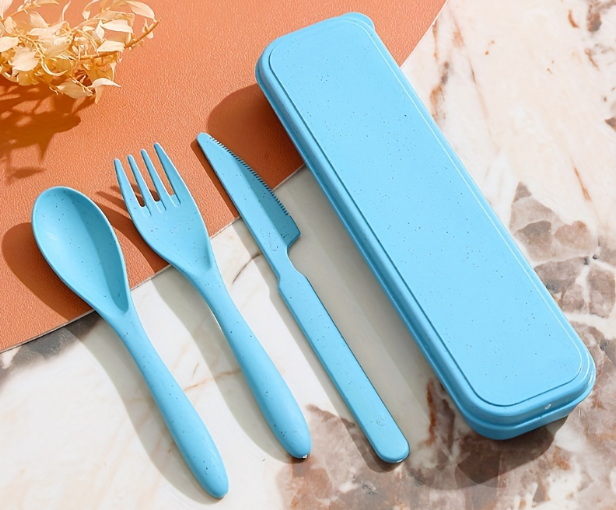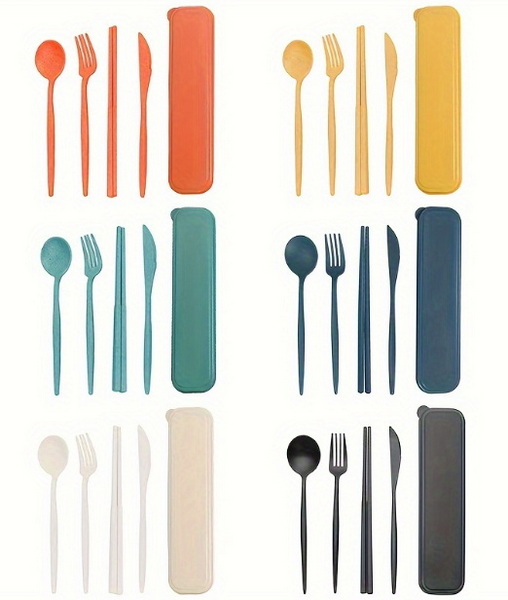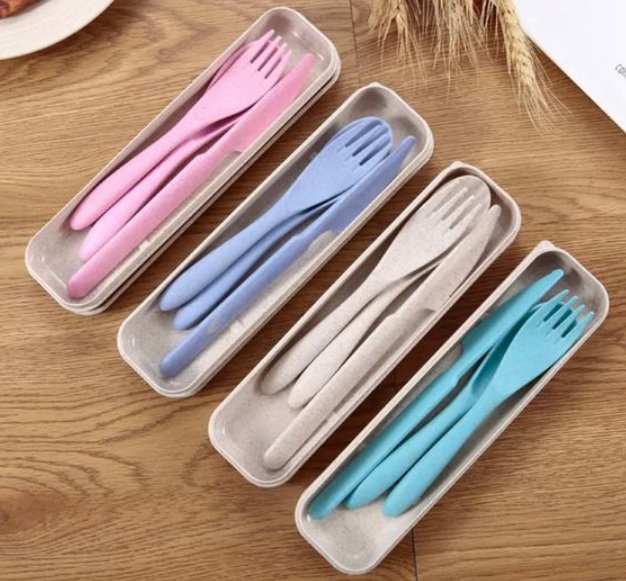
Content Menu
● What Are Disposable Fork and Spoon Sets?
>> Common Uses
● Can You Safely Reuse Disposable Forks and Spoons?
>> Safety Concerns
>>> 1. Chemical Leaching
>>> 2. Bacterial Growth
>>> 3. Material Durability
>> Washing Tips
● Creative Ways to Repurpose Disposable Forks and Spoons
>> Craft Projects
>>> 1. Decorative Art Pieces
>>> 2. DIY Jewelry
>>> 3. Holiday Decorations
>> Household Uses
>>> 1. Garden Markers
>>> 2. Paint Stirrers
>>> 3. Food Scoops
>> Educational Activities
● Environmental Impact of Disposable Cutlery
>> Plastic Pollution
>> Carbon Footprint
>> Waste Management Challenges
● Sustainable Alternatives to Disposable Forks and Spoons
>> 1. Reusable Cutlery Sets
>> 2. Compostable Utensils
>> 3. Edible Utensils
>> 4. Bring Your Own Utensils (BYOU)
● Conclusion
● FAQs
>> 1. Is it safe to reuse disposable plastic forks and spoons?
>> 2. Can disposable cutlery be recycled?
>> 3. What are some alternatives to disposable fork and spoon sets?
>> 4. How can I repurpose disposable cutlery creatively?
>> 5. Why is disposable cutlery harmful to the environment?
● Citations:
Disposable fork and spoon sets have become a ubiquitous part of modern life. Whether at parties, picnics, fast-food restaurants, or during takeout meals, these lightweight and inexpensive utensils are often the go-to choice for convenience. However, with growing awareness of environmental issues and the need to reduce waste, many people are asking: Can you reuse a disposable fork and spoon set? This article explores the practicality and safety of reusing disposable cutlery, provides creative ideas for repurposing them, and discusses their environmental impact. By the end of this article, you'll have a better understanding of how to make more sustainable choices in your everyday life.

What Are Disposable Fork and Spoon Sets?
Disposable fork and spoon sets are single-use utensils typically made from plastic materials like polystyrene, polypropylene, or polyethylene. These plastics are chosen for their durability, lightweight properties, and low production costs. Some disposable cutlery is made from biodegradable materials such as cornstarch-based plastics or bamboo, but traditional plastic utensils remain the most common.
These utensils are designed for convenience rather than longevity. Their primary purpose is to eliminate the need for washing dishes, making them ideal for events where large numbers of people are served. However, their convenience comes at a cost—both financially and environmentally.
Common Uses
- Takeout meals and fast food
- Outdoor events like picnics or barbecues
- Office lunches or school cafeterias
- Emergency kits for disaster preparedness
While disposable utensils are undeniably convenient, their short lifespan raises questions about sustainability and waste management.
Can You Safely Reuse Disposable Forks and Spoons?
The short answer is yes—you can reuse disposable fork and spoon sets—but there are important factors to consider before doing so. Let's break it down into safety concerns, cleaning tips, and material durability.
Safety Concerns
1. Chemical Leaching
Many disposable plastic utensils are not designed to withstand repeated use or exposure to heat. When washed with hot water or used with hot foods, they may release harmful chemicals such as bisphenol A (BPA) or phthalates into your food. While some plastics are labeled as "food-safe," they are typically intended for single use only.
2. Bacterial Growth
Disposable utensils often have small crevices or textured surfaces where food particles can get trapped. These areas can harbor bacteria even after washing, posing a potential health risk if reused without proper cleaning.
3. Material Durability
Not all disposable forks and spoons are created equal. Higher-quality plastic utensils may withstand multiple uses if cleaned properly, but lower-quality ones may break or degrade quickly.
Washing Tips
If you decide to reuse disposable cutlery, follow these steps to minimize health risks:
- Wash utensils immediately after use with warm water and dish soap.
- Use a soft brush to clean hard-to-reach areas or crevices.
- Avoid using abrasive sponges that could scratch the surface of the plastic.
- Do not place disposable utensils in dishwashers or expose them to boiling water.
- Allow them to air dry completely before storing.
Creative Ways to Repurpose Disposable Forks and Spoons
If reusing disposable forks and spoons for eating feels unsafe or impractical, there are countless ways to repurpose them creatively. Here are some innovative ideas that can help you give these items a second life:
Craft Projects
1. Decorative Art Pieces
Disposable forks and spoons can be transformed into stunning art pieces. For example:
- Create flower arrangements by gluing spoons together in petal-like shapes.
- Use forks to create abstract sculptures or wall hangings.
2. DIY Jewelry
With some creativity and basic tools, you can bend plastic forks into bracelets or necklaces. This is a fun project for kids and adults alike.
3. Holiday Decorations
Turn spoons into Christmas ornaments by painting them in festive colors or using them as bases for miniature figurines.
Household Uses
1. Garden Markers
Write plant names on spoons using permanent markers and stick them into the soil as garden markers.
2. Paint Stirrers
Use forks or spoons as stirrers for small paint projects instead of buying new tools.
3. Food Scoops
Repurpose spoons as scoops for dry goods like flour, sugar, rice, or coffee beans.
Educational Activities
1. Teach children about recycling by incorporating disposable cutlery into science experiments.
2. Use forks and spoons as tools for teaching physics concepts like balance or leverage.
3. Organize art projects in schools that involve repurposing disposable items into creative designs.
Environmental Impact of Disposable Cutlery
The environmental consequences of disposable fork and spoon sets cannot be overstated. Here's a closer look at their impact:
Plastic Pollution
Plastic utensils contribute significantly to global pollution:
- Most disposable forks and spoons are made from non-biodegradable plastics that persist in landfills for hundreds of years.
- Improperly disposed plastic cutlery often ends up in oceans, where it breaks down into microplastics that harm marine life.
Carbon Footprint
The production of disposable plastics involves extracting fossil fuels like petroleum or natural gas:
- This process emits significant amounts of greenhouse gases.
- Manufacturing single-use plastics consumes energy that could be saved by using reusable alternatives.
Waste Management Challenges
Recycling programs rarely accept plastic utensils because they are small, lightweight, and made from mixed plastics that are difficult to sort. As a result:
- Most end up in landfills or incinerators.
- Biodegradable options like cornstarch-based cutlery require industrial composting facilities that may not be available in all areas.

Sustainable Alternatives to Disposable Forks and Spoons
Switching to sustainable alternatives is one of the best ways to reduce your environmental footprint while still enjoying convenience:
1. Reusable Cutlery Sets
Invest in stainless steel or bamboo utensil sets that come with carrying cases for easy transport.
2. Compostable Utensils
Look for biodegradable options made from materials like cornstarch, wood, or sugarcane pulp.
3. Edible Utensils
Some companies now produce edible cutlery made from ingredients like rice or wheat—perfect for eco-conscious consumers who want zero waste!
4. Bring Your Own Utensils (BYOU)
Carry your own reusable fork-and-spoon set when eating out or ordering takeout.
Conclusion
Reusing a disposable fork and spoon set is possible under certain conditions but comes with limitations related to safety and durability. Washing them thoroughly can make them safe for limited reuse; however, repurposing them creatively is often a better option that aligns with sustainability goals. Ultimately, the best solution lies in reducing reliance on single-use plastics altogether by opting for reusable or biodegradable alternatives.
By making small changes in our daily habits—such as carrying reusable cutlery—we can collectively reduce waste, conserve resources, and protect our planet for future generations.

FAQs
1. Is it safe to reuse disposable plastic forks and spoons?
Yes, it can be safe if you wash them thoroughly with warm water and soap immediately after use. However, avoid exposing them to high heat as this may cause chemical leaching.
2. Can disposable cutlery be recycled?
Unfortunately, most recycling programs do not accept disposable plastic cutlery due to its small size and mixed materials composition.
3. What are some alternatives to disposable fork and spoon sets?
Sustainable alternatives include stainless steel cutlery sets, bamboo utensils, compostable options made from cornstarch or sugarcane pulp, and even edible utensils.
4. How can I repurpose disposable cutlery creatively?
You can use them in craft projects (e.g., sculptures or jewelry), household tasks (e.g., garden markers), or educational activities (e.g., teaching recycling concepts).
5. Why is disposable cutlery harmful to the environment?
Disposable plastic cutlery contributes significantly to pollution because it is non-biodegradable, difficult to recycle, and often ends up in oceans where it harms marine ecosystems.
Citations:
[1] https://www.rainbowrecycling.org/are-plastic-utensils-recyclable/
[2] https://www.ehn.org/single-use-plastics-hidden-risks-2670284086.html
[3] https://emeraldecovations.com/2024/08/uncovering-the-environmental-impact-of-plastic-spoons/
[4] https://www.alamy.com/stock-photo/disposable-spoon.html
[5] https://www.youtube.com/watch?v=rM_-53KNC10
[6] https://www.cleaninginstitute.org/cleaning-tips/clean-home/ask-aci/ask-aci-washing-disposable-dishes-and-utensils
[7] https://ahimsahome.com/blogs/childrens-health-blog/the-surprising-impact-of-plastic-utensils-on-our-planet
[8] https://www.youtube.com/watch?v=k5kvPQ1qtc8
[9] https://www.a1plast.com/plastic-cutlery-manufacturers-dubai-a1plast/
[10] https://news.wisc.edu/curiosities-is-it-safe-to-reuse-plastic-knives-and-forks/
[11] https://www.youtube.com/watch?v=Pl97OBNaRF0
[12] https://www.nationalgeographic.com/environment/article/carrying-your-own-fork-spoon-help-plastic-crisis
[13] https://www.magnumpackaging.co.uk/disposable-cutlery-faq-i27
[14] https://nylcv.org/news/skip-the-stuff-a-simple-solution-to-the-single-use-plastics-epidemic/
[15] https://greentableware.hk/en-us/home/about
[16] https://www.sustainability.vic.gov.au/circular-economy-and-recycling/at-home/avoid-waste/minimise-single-use-items/disposable-dinnerware
[17] https://www.washingtonpost.com/climate-solutions/2024/12/01/single-use-plastics-reuse-risk/
[18] https://www.polyu.edu.hk/greencampus/Events/News/2020/202005-Reusable-cutlery-helps
[19] https://www.reddit.com/r/Frugal/comments/bzq9tv/is_it_safe_to_constantly_reuse_plastic_utensils/
[20] https://www.the-innovation.org/article/doi/10.59717/j.xinn-med.2024.100059
[21] https://www.greenpower.org.hk/eng-all-about-greens/calling-for-comprehensive-regulation-of-disposable-plastic-tableware
[22] https://www.allrecipes.com/article/safe-reuse-plastic-utensils-cups-plates/
[23] https://www.lifecycleinitiative.org/wp-content/uploads/2021/03/UNEP-D001-Tableware-Report_Lowres.pdf
[24] https://www.istockphoto.com/photos/disposable-cutlery
[25] https://www.shutterstock.com/search/plastic-forks
[26] https://www.gettyimages.hk/%E5%9C%96%E7%89%87/plastic-spoon-and-fork
[27] https://www.shutterstock.com/search/plastic-spoons-waste
[28] https://www.istockphoto.com/photos/plastic-cutlery
[29] https://www.youtube.com/watch?v=IKOqMbJ0P6I
[30] https://www.shutterstock.com/search/plastic-cutlery-waste?page=8
[31] https://stock.adobe.com/search?k=disposable+cutlery

















